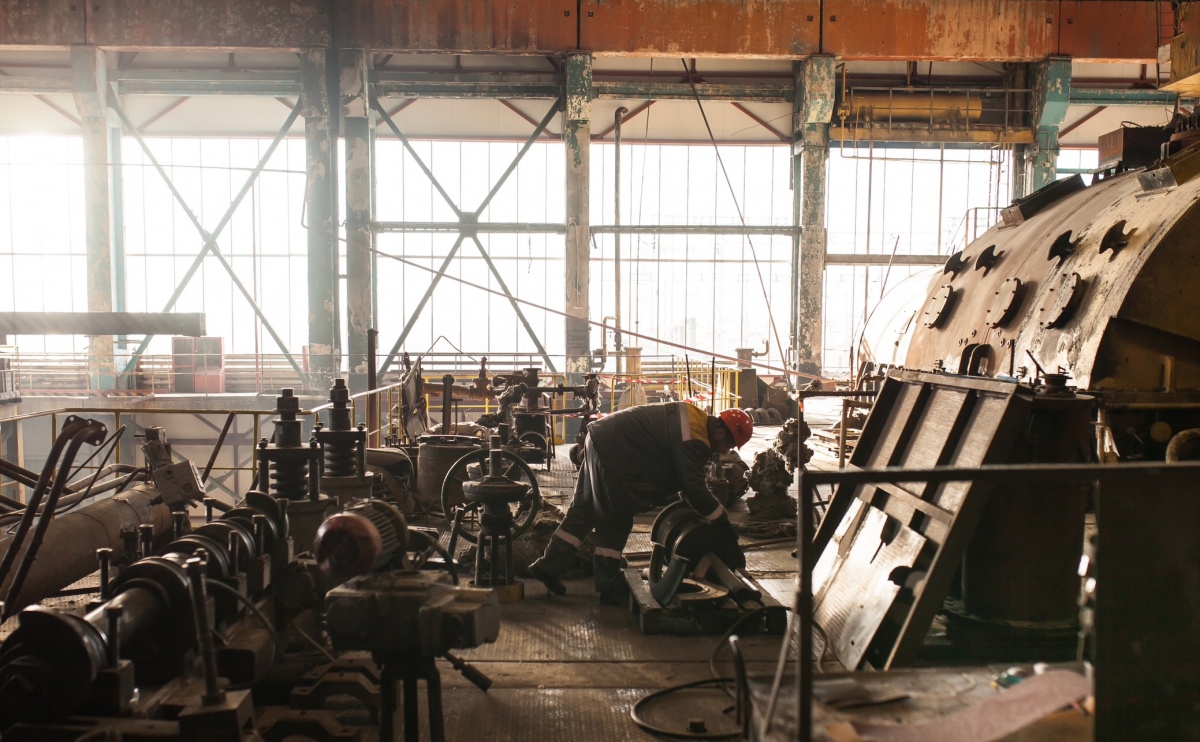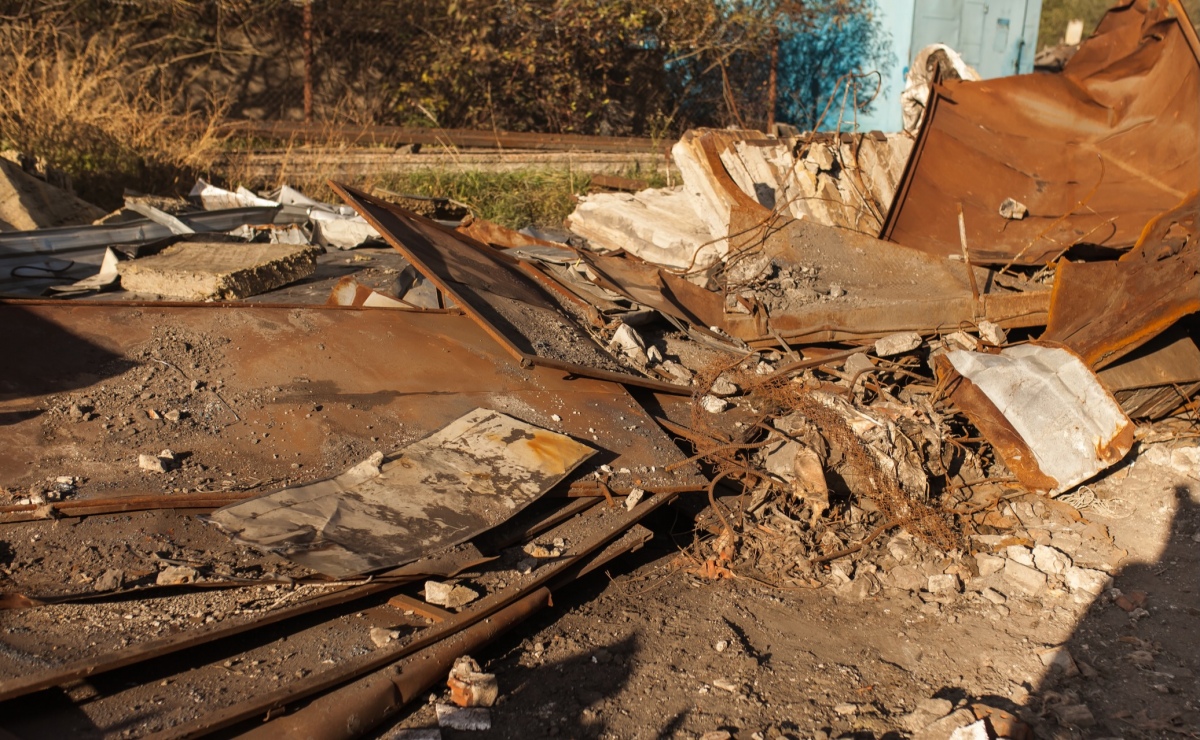The battle for light continues. A report from the power plant devastated by Russian forces.
Russia has destroyed nearly 90% of the maneuverable capacities of Ukraine's largest energy company DTEK, owned by Rinat Akhmetov. Some power plants have been completely devastated and cannot be restored. The EP visited one of the thermal power plants (TPP) that was destroyed by Russian forces in May 2024. Is there any chance for its recovery?
For security reasons, EP does not disclose the name of the TPP.
Infrastructure Object
The TPP is more than just a power plant. It is a vast facility consisting of a system of buildings, around which infrastructure has expanded over the years. The lives of residents in surrounding towns and villages revolve around the station. One TPP provides heat to thousands of homes and even more with electricity.
Local residents often work at power plants their entire lives, sometimes even across generations. Together with the satellite cities, the TPP forms a separate ecosystem with thousands of employees.
 9
9 On a warm spring day in 2024, Russia destroyed in mere minutes what had embodied this infrastructure for more than half a century. The locals immediately understood where the "hit" had landed: the windows in their homes shook.
The height of the flames engulfing the station was taller than the buildings themselves. TPP workers began to extinguish the fire themselves even before firefighters arrived, but the renewed missile threat forced everyone to seek shelter again.
The workers cannot recall how long it took to extinguish that fire. The adrenaline made the passage of time feel nonexistent. The flames consumed everything in their path: pipes, plastic, metal structures; even concrete could not withstand it.
Now the TPP is partially roofless and wall-less, but the stairs remain, which the energy workers still use to move around. Moreover, there is much chaos, dust, and construction debris. What was once critical equipment has turned into scrap.
 0
0Due to the absence of some structural elements, a strong draft has formed at the station, and cold envelops nearly all its visitors. Almost everyone, except for the cats and dogs, who instinctively come to the once warm stoves hoping to warm up.
 1
1The heating season has begun in the country, so energy workers are trying to restore at least some capacity of the station to provide warmth to the local population. Since the onset of the full-scale war, Russian forces have shelled various TPPs owned by DTEK more than 190 times. More than 40 times, energy workers have partially restored the stations "from scratch."
The station visited by the EP journalist has been hit multiple times. Its workers are not new to rebuilding the TPP. They fear that after yet another restoration, it will again be in the crosshairs of the Russians. They say they must rebuild because people need electricity and heat. Thus, the battle for light continues.
What Happened at the Station After the "Hit"
During every air raid alert, all TPP personnel are in the bomb shelter. "The destruction was horrific, but not a single person was harmed," says the station shift supervisor, Orest, who has worked here for over 25 years.
He recalls the beginning of the air raid alert: all workers were tense. Then they heard an explosion. "I saw smoke and flames. Without waiting for reconnaissance, the watch staff deployed fire hoses and attempted to localize the fire," Orest recounts.
The power plant employees localized the fire even before the firefighters arrived. Andriy, the chief specialist of the boiler-turbine department, was involved in this effort.
 2
2"Everything was engulfed in black smoke, the floor was collapsing. I organized the operational staff to localize the fire's center. Just as we started, a second alarm sounded, signaling the launch of 'darts.' After the all-clear, we returned in gas masks, with oxygen tanks, and continued to extinguish the fire," he recalls.
The initial emotions after extinguishing the fire are hard to describe. "You sit down, hold your head, and don’t know what to do. After the first 'hits,' it took a year and a half to restore everything, we started working, and here – five minutes of attack and everything is destroyed again. You sit and almost cry," said Andriy, who has worked at the station for 12 years.
 3
3As a result of the fire, some equipment elements automatically shut down, while others were turned off by the workers. During an emergency shutdown, the gas supply to the boiler is automatically cut off, and pumps and turbines are disabled. This helps prevent even greater destruction or damage to the technological equipment.
After extinguishing the fire, the long road to the station's recovery began.
What Is Happening at the TPP
The energy workers estimated that the total area of critical destruction at the TPP is about 18,000 square meters. Workers joke that the station could now be rented out to Hollywood for a movie about Terminator.
The first thing that catches the eye is the absence of walls and a roof. As a result of the "hit," the ceiling partially collapsed. They didn’t manage to clear all the debris. Scattered remnants of burnt metal can be found: from small parts to huge chunks.
 4
4The metal stairs, used by energy workers, stand firmly. However, they are no longer separated from the outside world by a wall.
 5
5There is a lot of dust and dirt covering the floor and structures. On the burnt pipelines, pieces of thermal insulation remain in places. Workers say the biggest danger is the frost. After a few days of cold weather, the pipes will start to freeze. Consequently, water will not flow, and the equipment will become uncontrollable.
"We are heating the pipes with gas torches. If something stops functioning, we fix it. Thus, alongside the main work of restoration and cleaning of the station, there are additional problems," says the chief specialist of the boiler-turbine department.
Almost all employees are somehow involved in the station's restoration; the company has not laid off anyone. There is noise all around; from every corner, you can hear banging, as people and machines are hard at work – repair work is in full swing. In the TPP building, coverings are being made for part of the equipment since they won't manage to build a new roof before the frost comes. Energy workers are trying to protect the most critical objects from hypothermia.
 6
6"Smile, you’re being photographed," one worker jokingly says to another. "There’s nothing to smile about. You can see what’s happening around," the second replies.
In the station's yard, piles of garbage and metal have accumulated. Workers are cutting it into smaller pieces. The mood among the workers is fighting. However, they worry that after the station is restored, it may again come under enemy fire. Right now, it’s crucial for them to provide consumers with heat and light.
 7
7DTEK reports that over the past few months, they have removed 200 truckloads of debris: some to special landfills, some for scrap metal. The funds raised are directed towards restoration. Energy workers are working around the clock. The primary task is to bring the station's capacity to at least several hundred megawatts. For context: Kyiv consumes about